|
[#1]
Good info. What conclusion did you come up with? From here, variables seem insignificant on accuracy. Barrel length, twist.
|
|
|
|
[#2]
I've fired a lot of my 55g VMax loads from my various 1-7" barreled ARs. I get just as good results as I do with my 77g BTHP loads.
Haven't tried 55g FMJ yet. But it has been on my "to do list" as far as range projects go. Knew by the topic it would be a Molon topic. |
|
|
|
[#3]
A good analysis would be plotting mean radius versus measured twist rate for various barrels all chambered with that same reamer and firing 55gr ammo from the same lot. The correlation coefficient should tell you if twist matters.
|
|
|
|
[#4]
Thank you. Can someone enter this into table format and sticky? Also would like to see a 1/8 in the future unless you are considering the 1/7.7 a 1/8
|
|
|
|
[#5]
Quoted: Thank you. Can someone enter this into table format and sticky? Also would like to see a 1/8 in the future unless you are considering the 1/7.7 a 1/8 View Quote @lafmedic1 In case you didn't see the "Molon Reference Links" sticky.. https://www.ar15.com/forums/AR-15/Molon-Reference-Links/118-693858/ |
|
|
|
[#7]
Neat. Thank you for the time and effort you out into these tests
|
|
|
|
[#8]
One more time Molan, thank you.
The knowledge and expertise you bring, and the hard data are irreplaceable. And you share it for free. 
|
|
|
|
[#9]
Much thanks for all time and effort you are putting into updating all your posts, Molon.
|
|
|
|
[#10]
Fantastic work once again Molon. Glad you came back.
Whats your favorite barrel these days for accuracy? Im partial to L-W but Im open to trying something new. Im thinking 18 or 20in for hand loaded 69gr Mk. |
|
|
|
[#11]
Thanks very much.
For many years I've spent a good chunk of time in spring shooting hundreds of ground squirrels for coyote bait and use almost exclusively Hornady 55 SP's. From a practical standpoint, I've never seen any difference between my 1/7 & 1/9 barrels. Recognizing that such shooting does not provide the proofs that this demonstration provides, I thank Molon for his efforts. The only problem I've run into w/ 1/7 twist rate is with new barrels and Hornady 55 SX bullets which disintegrated between the muzzle and the target. I simply avoid using those bullets. |
|
|
|
[#13]
|
|
|
|
[#14]
I don't think a difference would be noticeable with 55gr until the twist rate comparison is 1:7 vs 1:12 or 1:14
|
|
|
|
[#16]
300 Blackout barrels have been trending towards faster twists in very short barrels and getting useful accuracy from bullet weights from 110 grain to 240 grain. I think the notion of “over stabilized” is slowly fading as a general concern. There is likely an optimum for any given barrel/cartridge/bullet and some might have a more sensitive sweet spot.
At the other end of bullet stabilization I’ve been surprised that a Nosler 77 grain BT have stabilized in a 20” 1:9 government profile barrel. My elevation/temp (3000’ & warm/hot) helps, but I’m not pushing velocity. I haven’t shot the load at extended distance from that barrel. I’m wondering if the bullet will stay stable out to just below transonic range given that predicted stability is 1.5 or less in colder temps? Is there a stability model that predicts at what velocity/range a marginally-stable-at-the-muzzle (1.4-1.5) projectile starts getting wobbly for given environment parameters? |
|
|
|
[#17]
Quoted: At the other end of bullet stabilization I’ve been surprised that a Nosler 77 grain BT have stabilized in a 20” 1:9 government profile barrel. View Quote Per Ballistic Performance of Rifle Bullets by Bryan Litz, the 77 grain Nosler has a nominal gyroscopic stability factor of 1.48 from a 1:9" twist barrel. ... |
|
|
|
[#18]
For discussion purposes, what about 200 and 300 meter ranges, like during basic training firing range time?
IIRC, Army manuals don't recommend 55 grain in 1/7 twist barrels for longer ranges. |
|
|
|
[#19]
|
|
|
|
[#20]
This is what I found with a quick search. I have Army FM on Marksmanship somewhere, and I remember it saying that M193 wasn't as accurate at long distances in a 1/7 twist as M855 was. I also know that M855 isn't supposed to be used in a 1/12 twist because it wasn't a fast enough twist for the bullet weight.
https://www.pica.army.mil/mas/Products/resources/MASHandbook_2019.pdf |
|
|
|
[#21]
Quoted: I have Army FM on Marksmanship somewhere, and I remember it saying that M193 wasn't as accurate at long distances in a 1/7 twist as M855 was. View Quote View All Quotes View All Quotes Quoted: I have Army FM on Marksmanship somewhere, and I remember it saying that M193 wasn't as accurate at long distances in a 1/7 twist as M855 was. That has jack shit to do with barrel twist and M193. The M855 can be more accurate at longer distances because it has a higher ballistic coefficient than M193. Quoted: I also know that M855 isn't supposed to be used in a 1/12 twist because it wasn't a fast enough twist for the bullet weight. Which has fuck-all to do with M193 and barrel twist rates. And gyroscopic stability is not determined by bullet weight. Quoted: https://www.pica.army.mil/mas/Products/resources/MASHandbook_2019.pdf That's not a US Army manual. It also states in that pamphlet that M855A1 has a dispersion of less than 6.3" at 600 yards, which is pure BS, which calls into question anything written in that pamphlet. ... |
|
|
|
[#22]
Quoted: Also would like to see a 1/8 in the future View Quote I used a 1:8" twist barrel for the accuracy portion of the article below. Return Of The M193 Clones 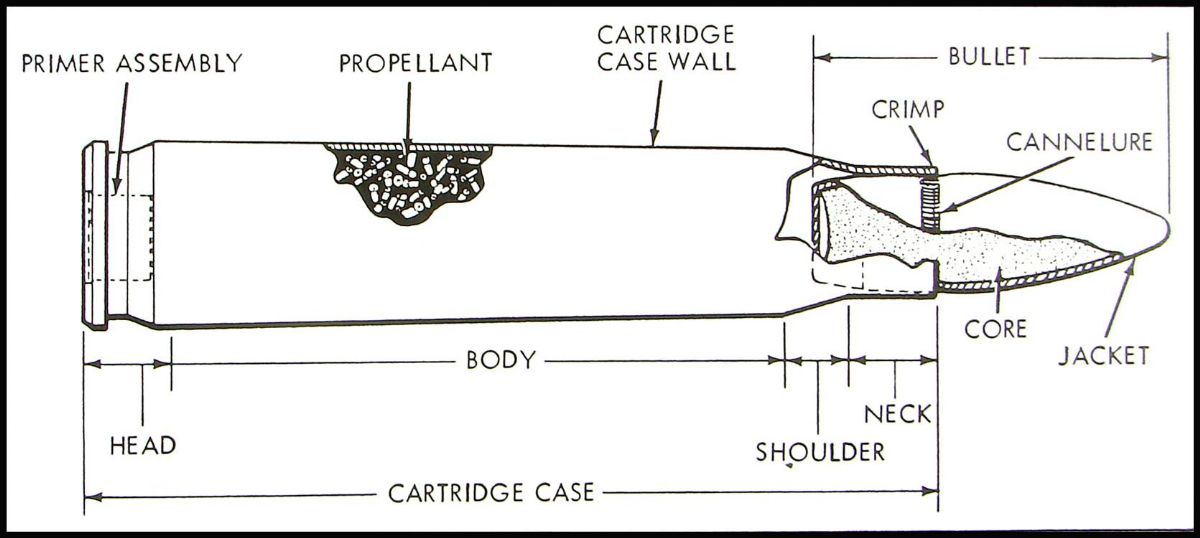 clone: one that appears to be a copy of an original form Part 1 Genuine US Military M193 can no longer be sold to civilians, thanks to the Clinton Administration. The ammunition that is sold on the commercial market with some form of “M193” in its nomenclature is often referred to as an “M193 clone” because it “appears to be a copy” of genuine M193, but we generally have no idea what specifications of MIL-C-9963 that this ammunition has passed, or has even been tested for. Genuine M193 must be tested for and pass all of the specifications laid out in the mil-spec, MIL-C-9963. The required areas of testing included in MIL-C-9963 range from velocity, accuracy, chamber pressure and port pressure to waterproofing, temperature stability, bullet extraction, case hardness, fouling and much more. M193 is loaded with a 55 grain FMJ bullet with a cannelure. The bullet itself, must meet required specifications in order to be used in genuine M193 ammunition. For example, the specification for the thickness of the gilding metal jacket of the bullet is 0.021" with a tolerance of - 0.002". For comparison, the jacket of Hornady’s 55 grain FMJ bullet has a thickness of approximately 0.028”. Jacket thickness can have a significant effect on terminal ballistic properties, particularly that of fragmentation. Even the composition of the copper alloy used for the jacket and the lead used for the slug must meet mil-spec requirements for genuine M193. Genuine M193 can only be charged with powder that has been specifically approved by the US Military for use in this cartridge. If the ammunition in question is not loaded with one of the approved powders, it is not genuine M193 and naturally we have no way of determining what powder was used in a load simply by visual inspection. Genuine M193 will have the annealing iris visible on the shoulder and neck portion of the case. It will also will have crimped and sealed primers. Genuine M193 has a crimped case mouth along with sealant at the case mouth. In 2010, I posted an in-depth evaluation of four different brands of M193 clones that were readily available at that time. (Attack of the (M193) Clones) For this article, I evaluated recent production lots of the same four brands of M193 clones (though not necessarily the same manufacturers.) Winchester M193 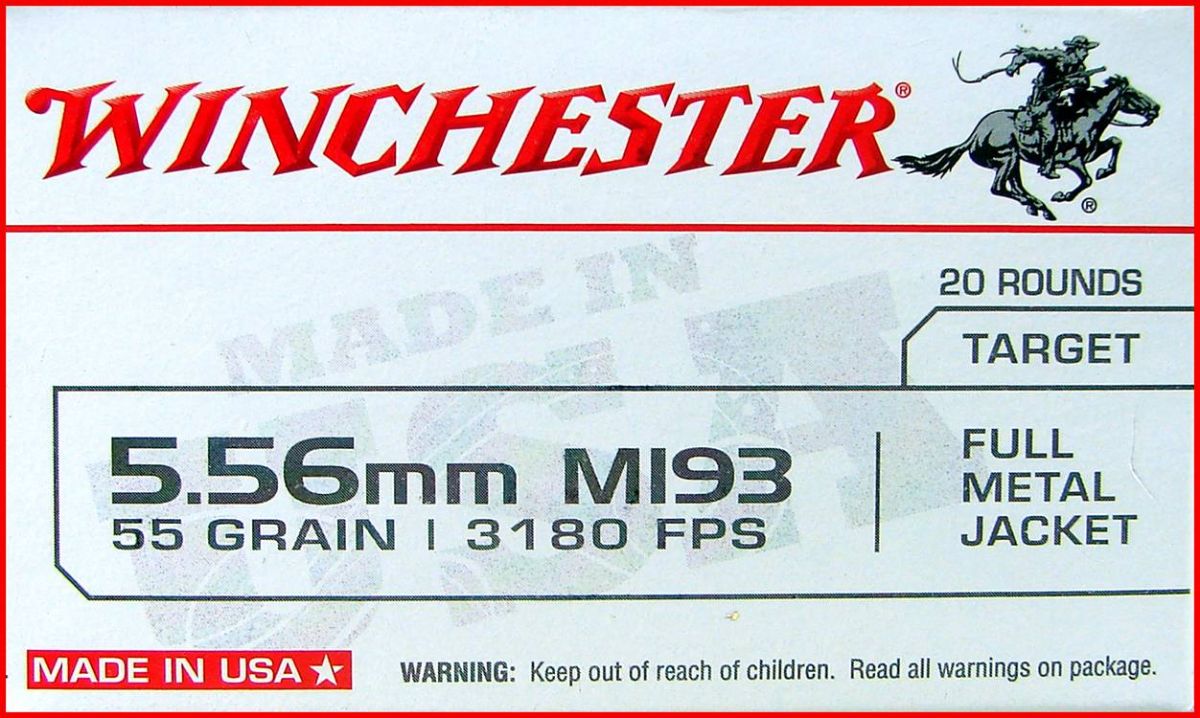 This lot of Winchester M193 is loaded in Lake City brass with a 2021 headstamp. The case-head stamp exhibits the octal station identifiers found on Lake City SCAMP machinery. The brass cases have the annealing iris still visible. The rounds are charged with ball powder. The primer pockets are crimped, but do not have any sealant. The case mouths are also crimped, but also have no sealant. 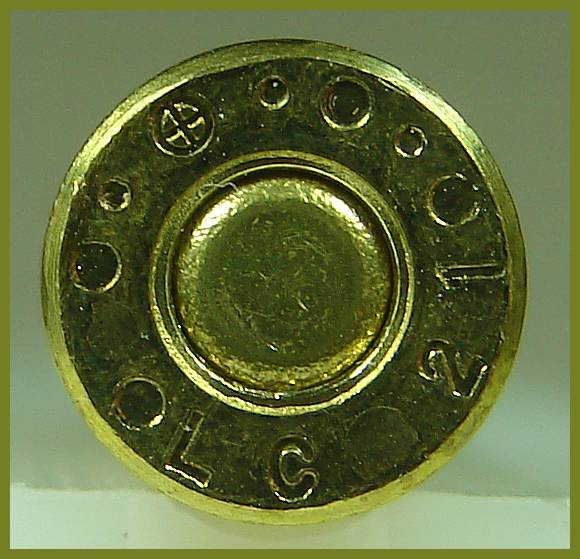 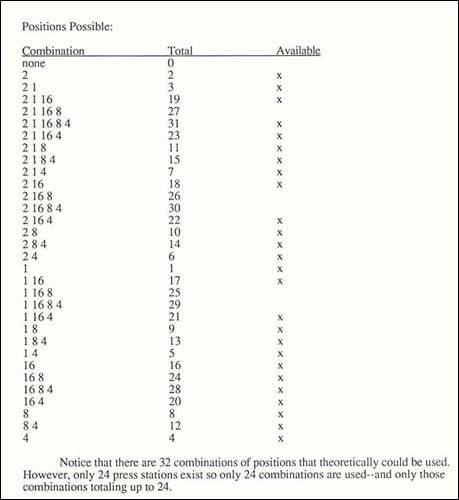 The lot number for this lot of Winchester M193 is pictured below. The “WLC21” in the prefix of the lot number indicates that this lot of Winchester M193 was manufactured at Lake City in 2021 under Winchester “management.”  Federal XM193 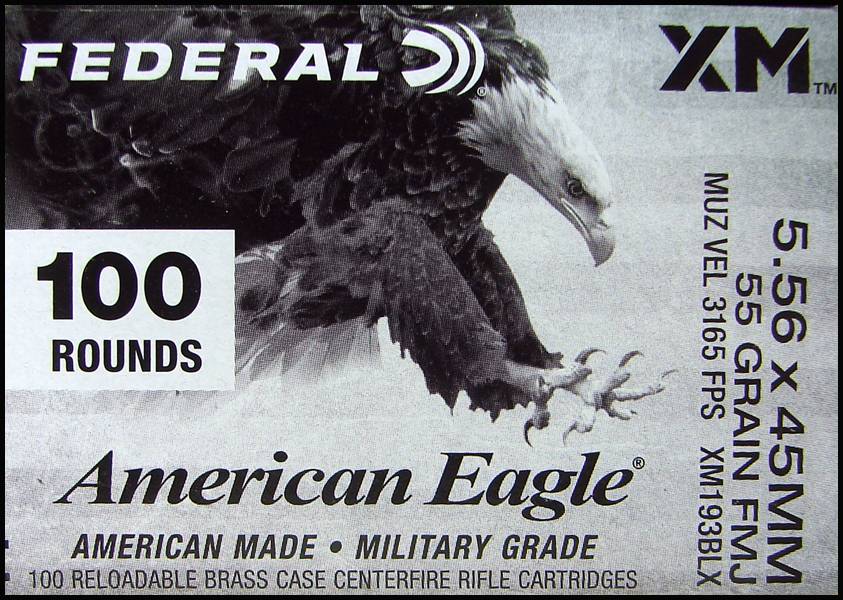 This lot of Federal XM193 is loaded in Lake City brass with a 2021 headstamp. The case-head stamp exhibits the octal station identifiers found on Lake City SCAMP machinery. The brass cases have the annealing iris still visible. The rounds are charged with ball powder. As with the Winchester M193, the primer pockets of this lot of Federal XM193 are crimped, but do not have any sealant. The case mouths of this lot of Federal XM193 are also crimped, but also have no sealant. 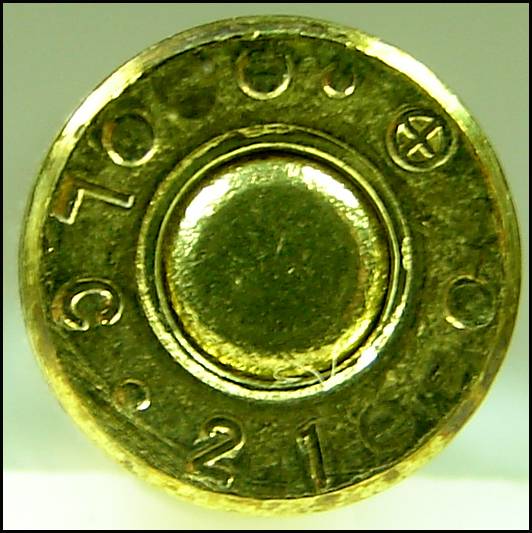 The lot number for this lot of Federal XM193 is pictured below. The “WLC21” in the prefix of the lot number indicates that this lot of Federal XM193 was manufactured at Lake City in 2021 under Winchester “management.”  IMI M193 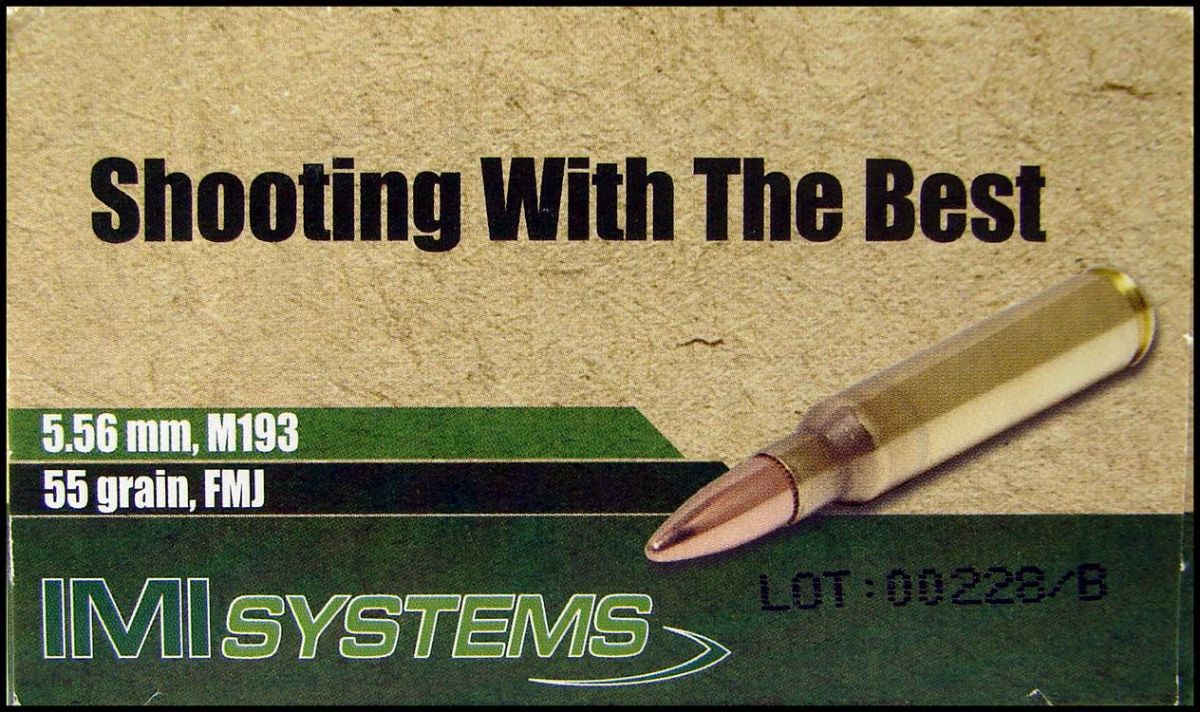 This lot of IMI M193 is loaded in IMI brass with a 2021 headstamp. The annealing iris is visible and the rounds are charged with ball powder. The primer pockets are crimped and sealed and the case mouths are also crimped and sealed. 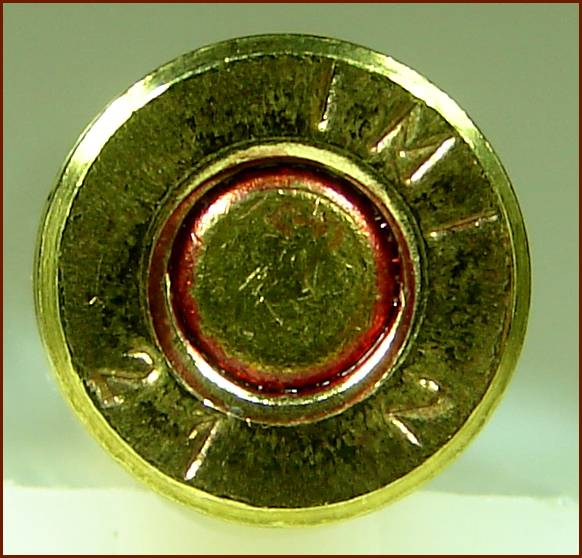 Prvi Partizan (PPU) M193 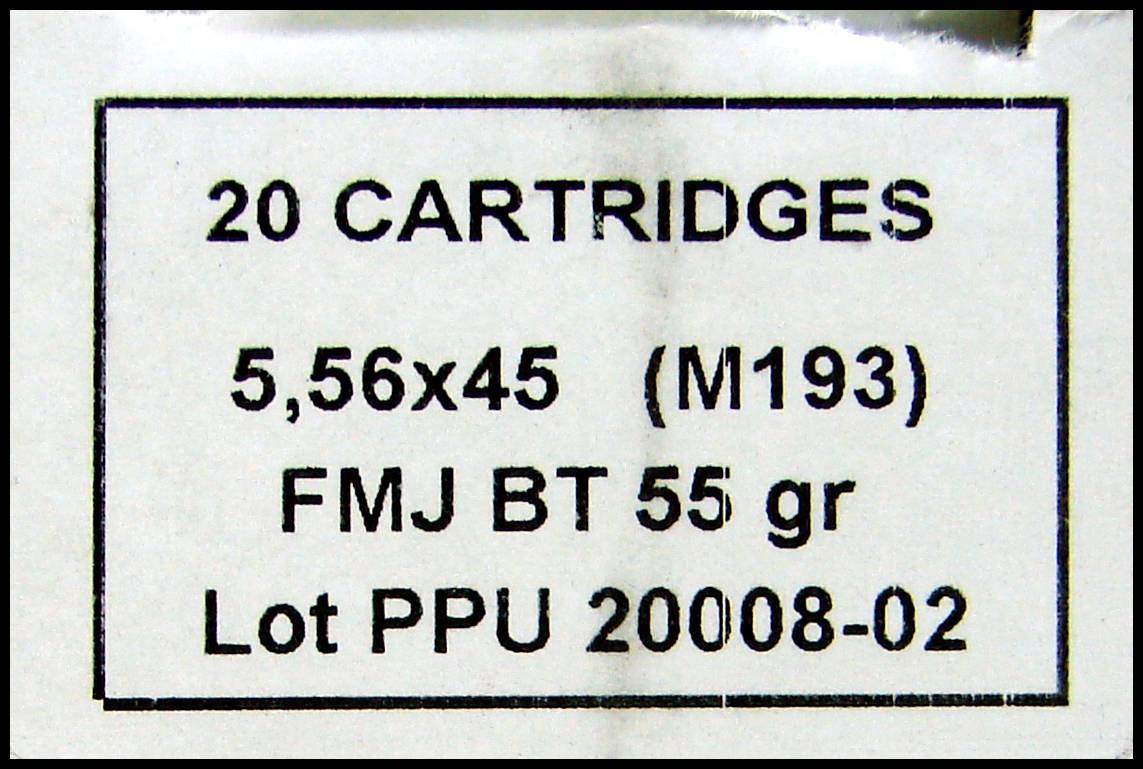 The PPU M193 brass has a 2020 headstamp and the annealing iris is visible. The primer pockets are crimped and sealed, as are the case mouths and the ammunition is charged with ball powder. 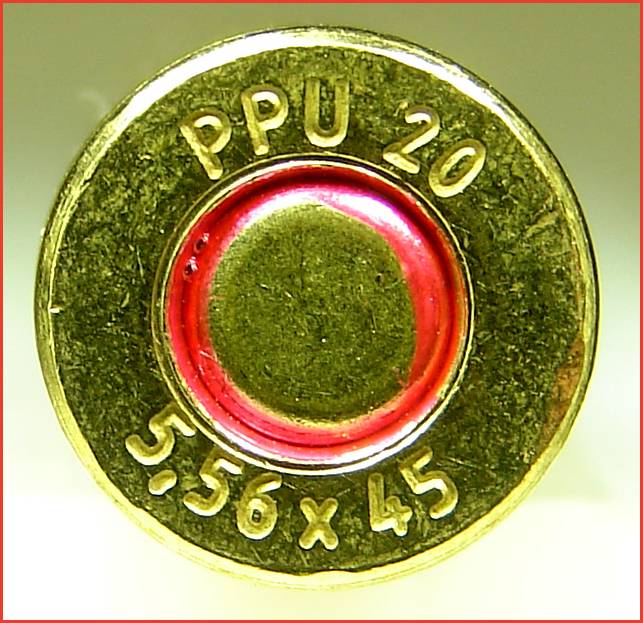 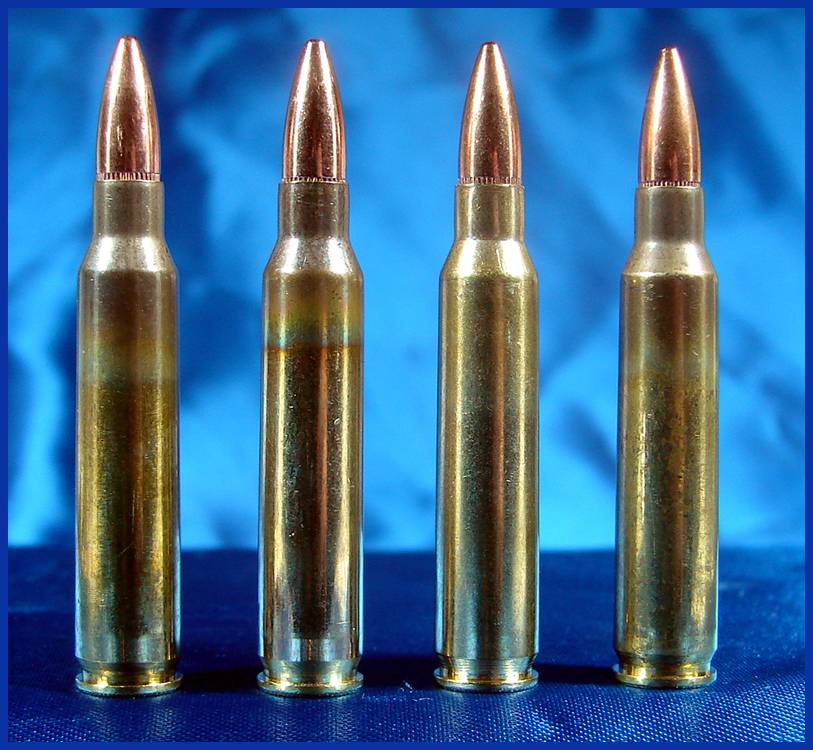 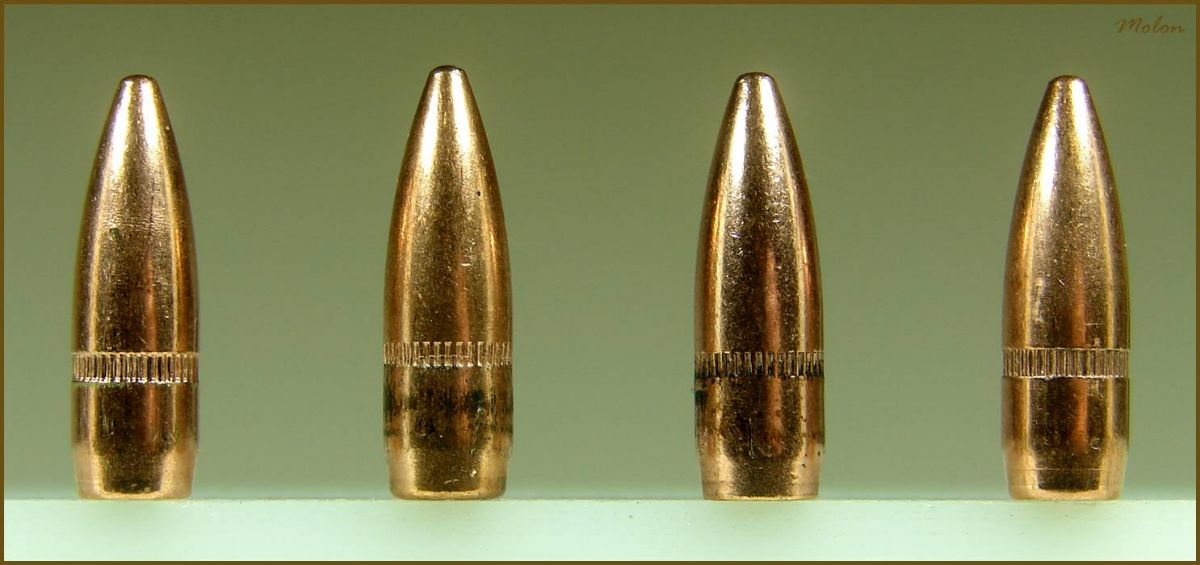 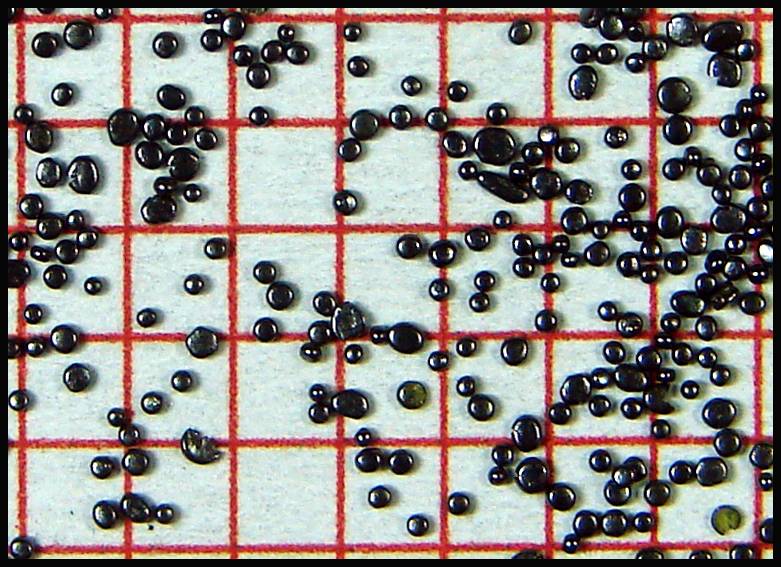 Part 2 Aside from aspects of M193 clones that can be assessed by visual inspection, the two main aspects of M193 clones that we can assess via live fire testing to determine if an M193 clone adheres to the US mil-spec are velocity and accuracy (technically precision). The velocity specification for M193 as cited in MIL-C-9963F states: "The average velocity of the sample cartridges, conditioned at 72 degrees, plus or minus 2 degrees Fahrenheit (F), shall be 3165 feet per second (ft/sec), plus or minus 40 ft/sec, at 78 feet from the muzzle of the weapon. The standard deviation of the velocities shall not exceed 40 ft/sec." The velocity specification is for a 20” test barrel. Depending on multiple variables, this velocity specification equates to a muzzle velocity of approximately 3270 ft/sec, plus or minus 40 ft/sec. As an aside, after reading the above specification, some of you may be wondering, “Why 78 feet from the muzzle?” The answer to that question is that this specification is simply an historical hold-over from the days when “circuit” chronographs (e.g. Le Boulenge Chronograph and the Aberdeen Chronograph) were used at Aberdeen Proving Ground, Frankford Arsenal and Springfield Armory. These types of chronographs required a significant distance between their first and second screens to produce accurate results. As an example, when using the Boulenge Chronograph, the first screen of the chronograph was placed 3 feet in front of the muzzle and the second screen was placed 150 feet beyond the first screen. For those of you who might not be aware of the following fact; chronographs determine the velocity of the bullet at a point that is midway between the first and the second screen (i.e. not at the location of the first screen). Therefore, with the above spacing, the velocity of the bullet is determined for a point that is 75 feet from the first screen. So, add the three feet (from the muzzle to the first screen) to the 75 feet (the midway point of the screens) to obtain the “78 feet from the muzzle” distance.  I chronographed the four M193 clones evaluated for this article from a semi-automatic AR-15 with a chrome-lined, NATO chambered 20” Colt barrel with a 1:7” twist. Chronographing was conducted using an Oehler 35-P chronograph with “proof screen” technology. The Oehler 35P chronograph is actually two chronographs in one package that takes two separate chronograph readings for each shot and then has its onboard computer analyze the data to determine if there is any statistically significant difference between the two readings. If there is, the chronograph “flags” the shot to let you know that the data is invalid. There was no invalid data flagged during this testing. The velocities listed in the table below are muzzle velocities as calculated from the instrumental velocities using Oehler’s Ballistic Explorer software program. Each string of fire consisted of 10 rounds over the chronograph. 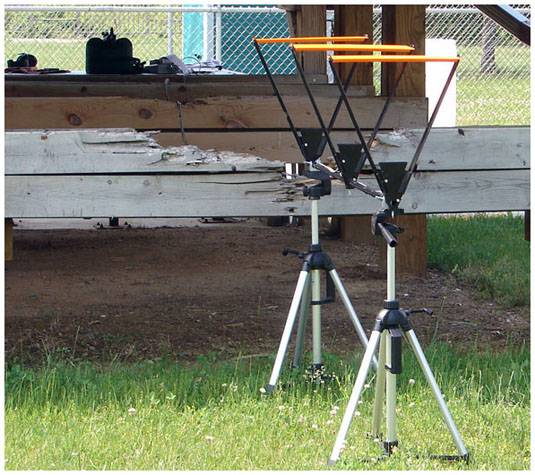  Each round was single-loaded and cycled into the chamber from a magazine fitted with a single-load follower. The bolt locked-back after each shot allowing the chamber to cool in between each shot. This technique was used to mitigate the possible influence of “chamber-soak” on velocity data. Each new shot was fired in a consistent manner after hitting the bolt release. Atmospheric conditions were monitored and recorded using a Kestrel 4000 Pocket Weather Tracker.  Atmospheric conditions Temperature: 72 degrees F Humidity: 78% Barometric pressure: 30.02 inches of Hg Elevation: 950 feet above sea level The muzzle velocities of the four M193 clones are listed in the table below, along with the standard deviations and coefficients of variation. 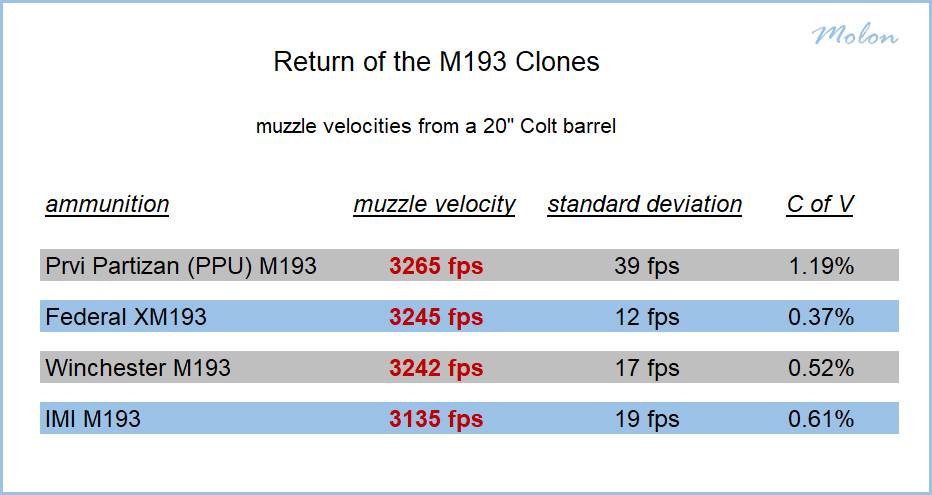 For those of you who might not be familiar with the coefficient of variation (CV), it is the standard deviation, divided by the mean (average) muzzle velocity and then multiplied by 100 and expressed as a percentage. It allows for the comparison of the uniformity of velocity between loads in different velocity spectrums; e.g. 77 grain loads running around 2,650 fps compared to 55 grain loads running around 3,250 fps. The mil-spec for M193 allows for a coefficient of variation of approximately 1.2%, while one of my best 77 grain OTM hand-loads, with a muzzle velocity of 2639 PFS and a standard deviation of 4 FPS, has a coefficient of variation of 0.15%.  For comparison to the velocities of the M193 clones evaluated for this article, the next table shows the muzzle velocities of the four M193 clones that I evaluated in 2010 (also fired from a 20” Colt barrel.) 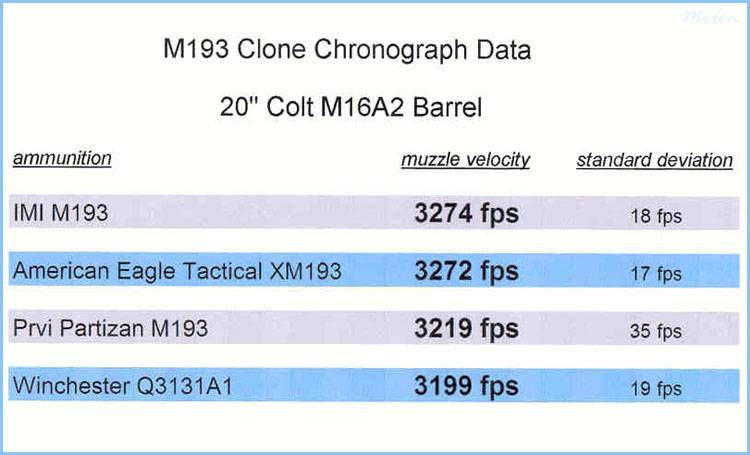 Part 3 The US accuracy specification for M193 cited in MIL-C-9963F is as follows: “The average of the mean radii of all targets of the sample cartridges, fired at 200 yards, shall not exceed 2.0 inches.” These averages are from 10-shot groups fired from machine rested, bolt-actioned, heavy test barrels. All things being equal this specification equates to a mean radius of 1 inch at 100 yards (the distance at which I tested this ammunition). I conducted an accuracy (technically, precision) evaluation of the four M193 clones following my usual protocol. This accuracy evaluation used statistically significant shot-group sizes and every single shot in a fired group was included in the measurements. There was absolutely no use of any Group Reduction Techniques (e.g. fliers, target movement, Butterfly Shots). The shooting set-up will be described in detail below. As many of the significant variables as was practicable were controlled for. Also, a control group was fired from the test-rifle used in the evaluation using match-grade, hand-loaded ammunition; in order to demonstrate the capability of the barrel. Pictures of shot-groups are posted for documentation. All shooting was conducted from a concrete bench-rest from a distance of 100 yards (confirmed with a laser rangefinder.) The barrel used in the evaluation was free-floated. The free-float handguards of the rifle rested in a Sinclair Windage Benchrest, while the stock of the rifle rested in a Protektor bunny-ear rear bag. Sighting was accomplished via a Leupold VARI-X III set at 25X magnification and adjusted to be parallax-free at 100 yards. A mirage shade was used. Wind conditions on the shooting range were continuously monitored using a Wind Probe. The set-up was very similar to that pictured below. 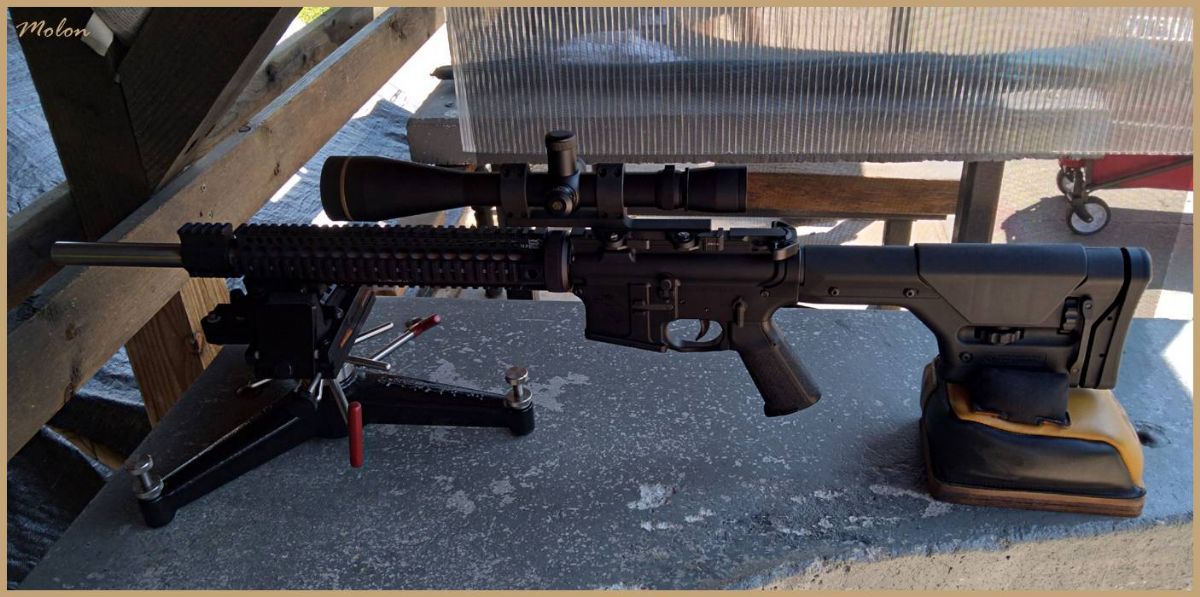 The Wind Probe . . . 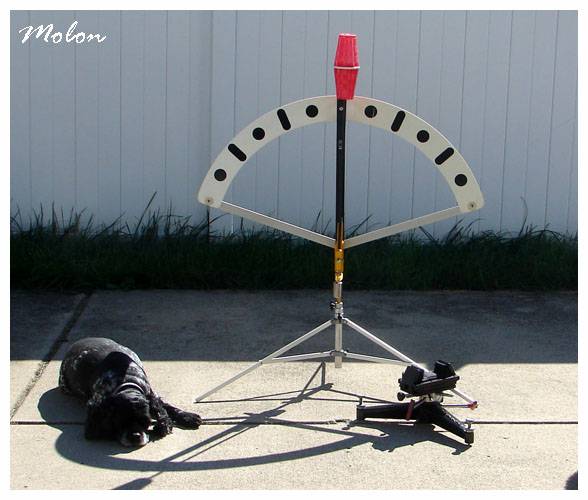 The test vehicle for this evaluation was one of my semi-automatic precision AR-15s with a 20” stainless-steel Lothar Walther barrel. The barrel has a 223 Wylde chamber with a 1:8” twist. 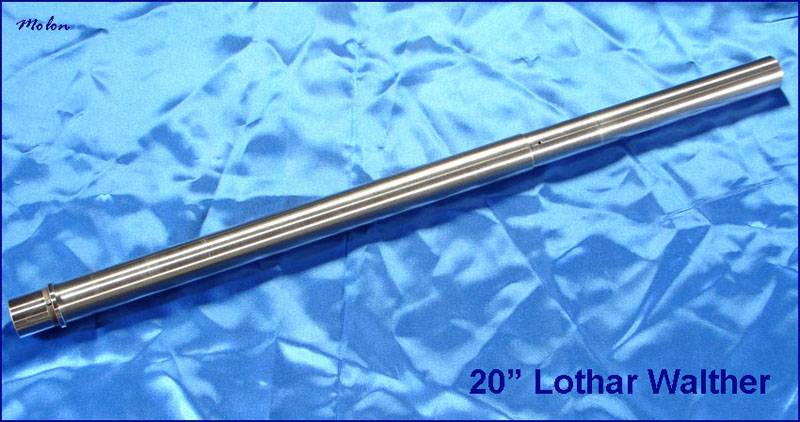 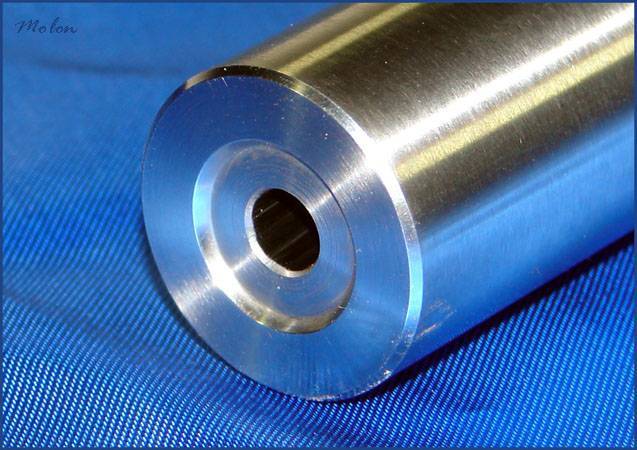 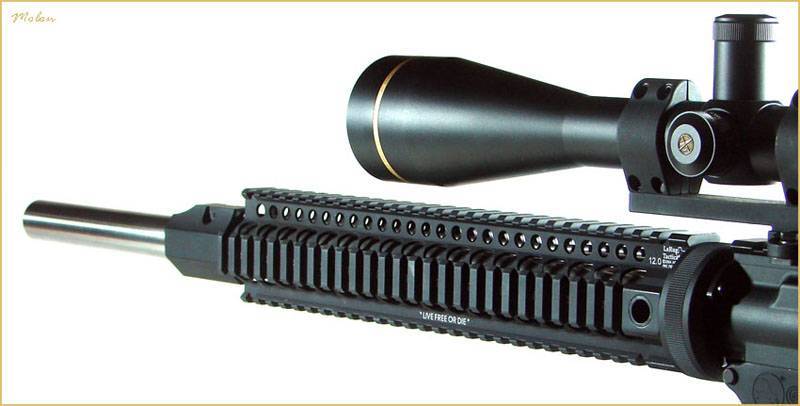 Prior to firing the M193 clones, I fired a 10-shot control group using match-grade hand-loads topped with the Sierra 52 grain MatchKing. That group had an extreme spread of 0.64”. 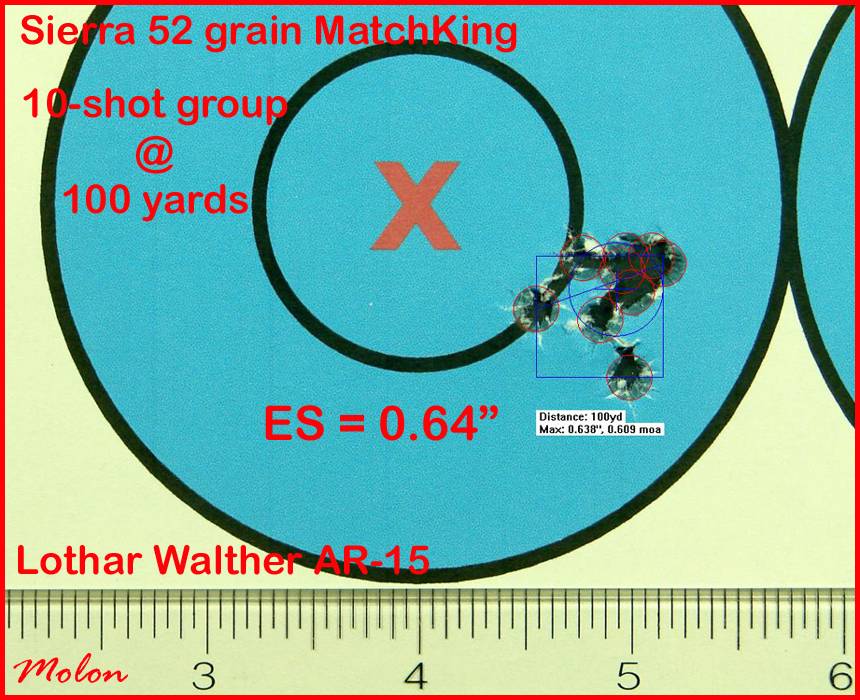 Prvi Partizan (PPU) M193 Three 10-shot groups of the PPU M193 ammunition fired consecutively from the Lothar Walther barreled AR-15 at a distance of 100 yards had the following extreme spreads: 3.00” 2.28” 3.48” for a 10-shot group average extreme spread of 2.92”. I over-layed the three 10-shot groups on each other using RSI Shooting Lab to form a 30-shot composite group. The mean radius of the 30-shot composite group was 0.80”. The smallest 10-shot group . . . 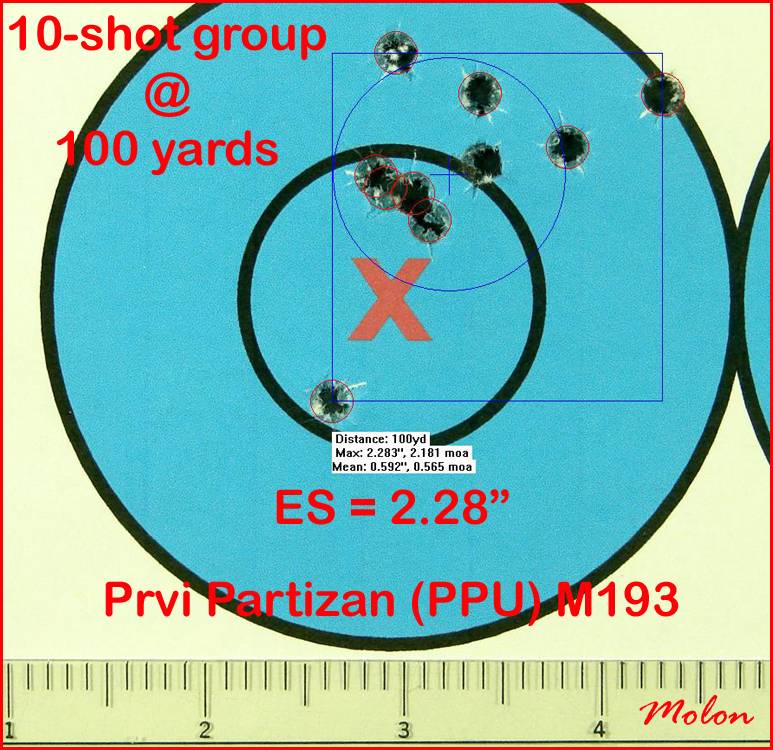 The 30-shot composite group . . . 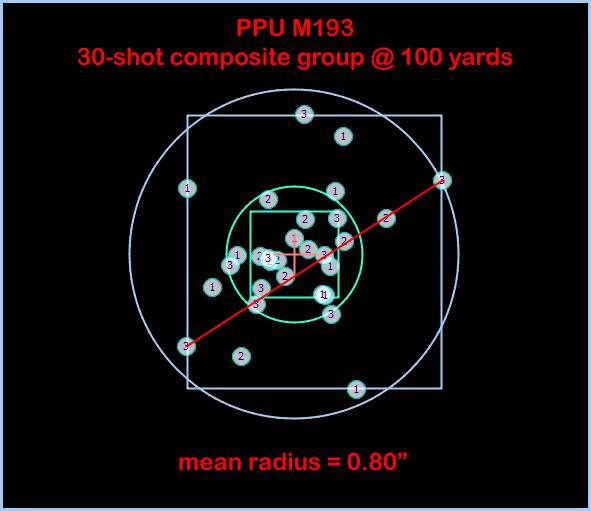 Winchester M193 Three 10-shot groups of the Winchester M193 ammunition fired consecutively from the Lothar Walther barreled AR-15 at a distance of 100 yards had the following extreme spreads: 2.21” 2.65” 2.09” for a 10-shot group average extreme spread of 2.32”. I over-layed the three 10-shot groups on each other using RSI Shooting Lab to form a 30-shot composite group. The mean radius of the 30-shot composite group was 0.72”. The smallest 10-shot group . . . 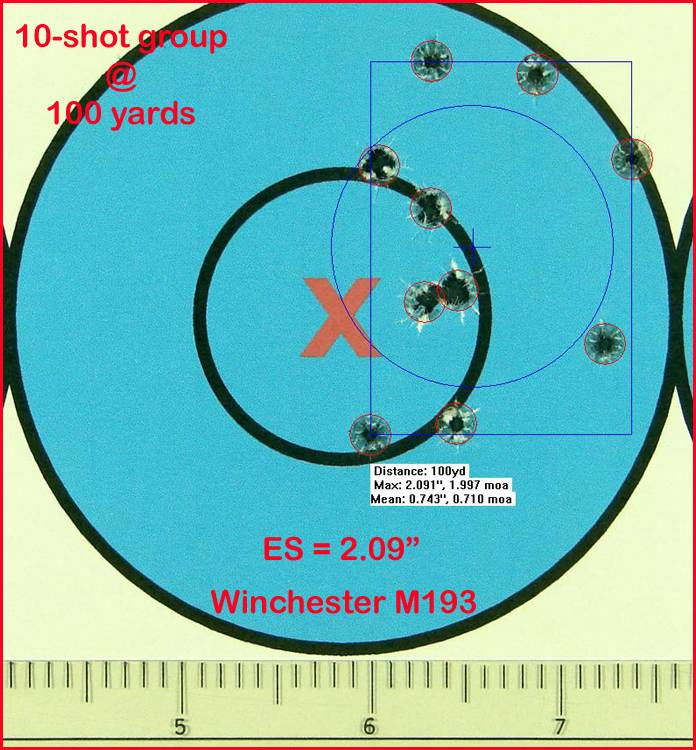 The 30-shot composite group . . . 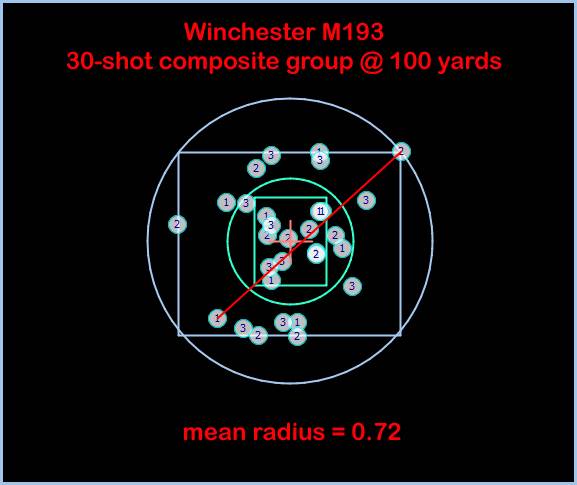 Federal XM193 Three 10-shot groups of the Federal XM193 ammunition fired consecutively from the Lothar Walther barreled AR-15 at a distance of 100 yards had the following extreme spreads: 2.36” 2.67” 1.77” for a 10-shot group average extreme spread of 2.27”. I over-layed the three 10-shot groups on each other using RSI Shooting Lab to form a 30-shot composite group. The mean radius of the 30-shot composite group was 0.66”. The smallest 10-shot group . . . 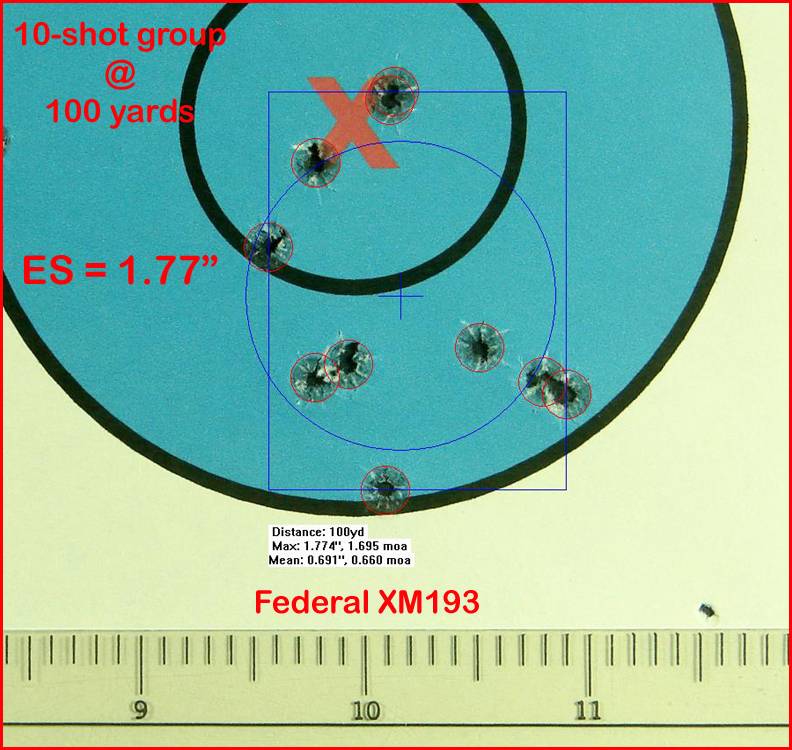 The 30-shot composite group . . . 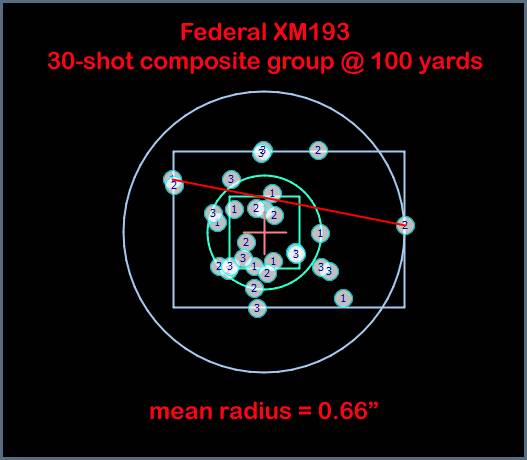 IMI M193 Three 10-shot groups of the IMI M193 ammunition fired consecutively from the Lothar Walther barreled AR-15 at a distance of 100 yards had the following extreme spreads: 1.84” 2.86” 2.16” for a 10-shot group average extreme spread of 2.29”. I over-layed the three 10-shot groups on each other using RSI Shooting Lab to form a 30-shot composite group. The mean radius of the 30-shot composite group was 0.64”. The smallest 10-shot group . . . 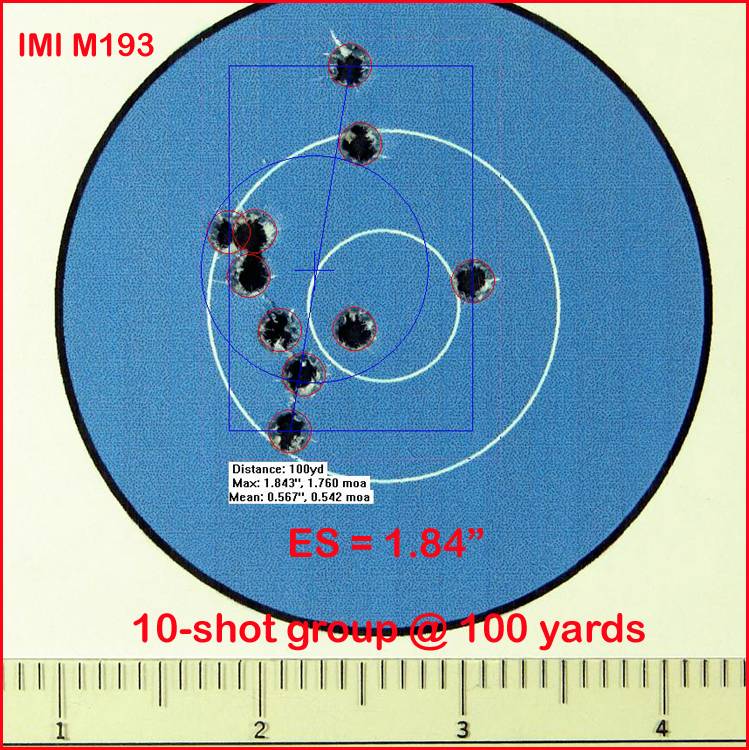 The 30-shot composite group . . . 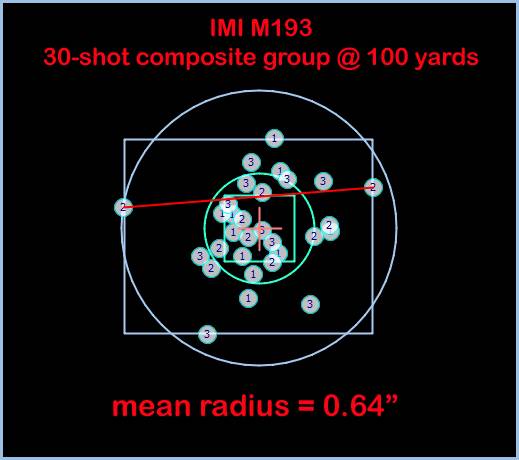 The table below summarizes the accuracy/precision results for this article. 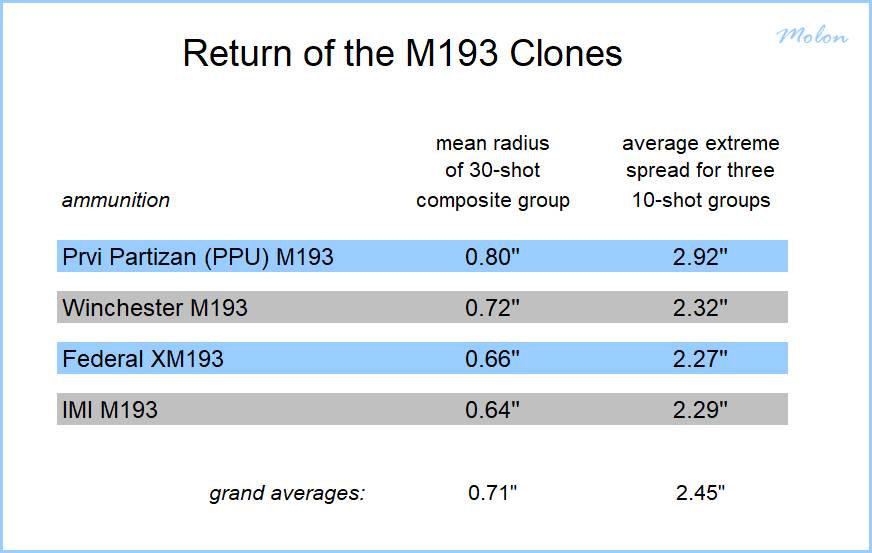 For comparison, the next table summarizes the accuracy/precision results from the 2010 evaluation. 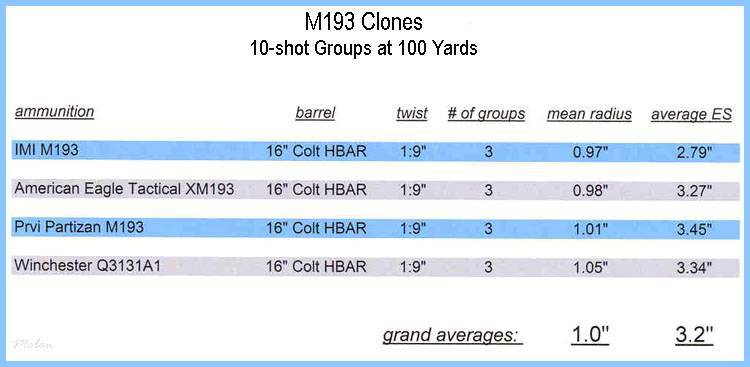  ….. |
|
|
|
[#23]
|
|
|
|
[#24]
Quoted: https://www.ar15.com/media/mediaFiles/5205/71710.JPG 52gr SMK at 100 yards from a 1/7" BCM gov't chrome lined barrel. 1/7 has no liability 1/9 has no advantage View Quote Unpossible. A light 52 grain bullet can't possibly be stable and shoot accurately from a fast twist barrel. . . . . . . . . 
|
|
|
|
[#25]
Quoted: That has jack shit to do with barrel twist and M193. The M855 can be more accurate at longer distances because it has a higher ballistic coefficient than M193. Which has fuck-all to do with M193 and barrel twist rates. And gyroscopic stability is not determined by bullet weight. That's not a US Army manual. It also states in that pamphlet that M855A1 has a dispersion of less than 6.3" at 600 yards, which is pure BS, which calls into question anything written in that pamphlet. ... View Quote View All Quotes View All Quotes Quoted: Quoted: I have Army FM on Marksmanship somewhere, and I remember it saying that M193 wasn't as accurate at long distances in a 1/7 twist as M855 was. That has jack shit to do with barrel twist and M193. The M855 can be more accurate at longer distances because it has a higher ballistic coefficient than M193. Quoted: I also know that M855 isn't supposed to be used in a 1/12 twist because it wasn't a fast enough twist for the bullet weight. Which has fuck-all to do with M193 and barrel twist rates. And gyroscopic stability is not determined by bullet weight. Quoted: https://www.pica.army.mil/mas/Products/resources/MASHandbook_2019.pdf That's not a US Army manual. It also states in that pamphlet that M855A1 has a dispersion of less than 6.3" at 600 yards, which is pure BS, which calls into question anything written in that pamphlet. ... Since you asked, Army FM 3-22.9 RIFLE MARKSMANSHIP M16-/M4-SERIES WEAPONS, Chapter 2, Section V, Table 2.8, notes on M855 ball and M856 tracer ammo: "This ammunition should not be used in the M16A1 except under emergency conditions, and only at targets less than 90 meters away. The twist of the M16A1 rifling is not sufficient to stabilize the length of the round's projectile." Anyway, your data as posted is very informative. Thanks. |
|
|
|
[#26]
This is great information Molon. Thanks for doing all the work.
kwg |
|
|
|
[#27]
Quoted: Since you asked, Army FM 3-22.9 RIFLE MARKSMANSHIP M16-/M4-SERIES WEAPONS, Chapter 2, Section V, Table 2.8, notes on M855 ball and M856 tracer ammo: "This ammunition should not be used in the M16A1 except under emergency conditions, and only at targets less than 90 meters away. The twist of the M16A1 rifling is not sufficient to stabilize the length of the round's projectile." Anyway, your data as posted is very informative. Thanks. View Quote Wasn't the M16 A1 a 1/12 twist, would that have something to do with the recommendation not to use the 855/856? I am asking the smart people 'cause I don't know |
|
|
|
[#28]
Quoted: Wasn't the M16 A1 a 1/12 twist, would that have something to do with the recommendation not to use the 855/856? View Quote Yes, but it's completely irrelevant to this thread, since this thread is about the 1:9" and 1:7" twist barrels and has nothing to do with the the M16A1 and 1:12" twist. ... |
|
|
 Win a FREE Membership!
Win a FREE Membership!
Sign up for the ARFCOM weekly newsletter and be entered to win a free ARFCOM membership. One new winner* is announced every week!
You will receive an email every Friday morning featuring the latest chatter from the hottest topics, breaking news surrounding legislation, as well as exclusive deals only available to ARFCOM email subscribers.
AR15.COM is the world's largest firearm community and is a gathering place for firearm enthusiasts of all types.
From hunters and military members, to competition shooters and general firearm enthusiasts, we welcome anyone who values and respects the way of the firearm.
Subscribe to our monthly Newsletter to receive firearm news, product discounts from your favorite Industry Partners, and more.
Copyright © 1996-2024 AR15.COM LLC. All Rights Reserved.
Any use of this content without express written consent is prohibited.
AR15.Com reserves the right to overwrite or replace any affiliate, commercial, or monetizable links, posted by users, with our own.

